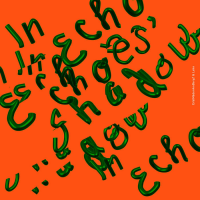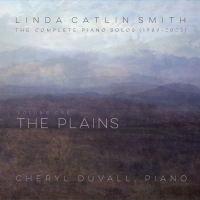Home » Jazz Articles » Multiple Reviews » Exposing the Cover Story Behind the Classics
Exposing the Cover Story Behind the Classics
Reading carbon copy raves about Miles Davis' model mastery on Kind Of Blue or Bill Evans lyrical trio interplay on Waltz For Debby must make many people wonder if those writers ever actually held the album in their hands. Many are indeed musical achievements of note - and more than a few are incompetent shams - but in virtually every case the musical image the artist tries to present to the world is vastly mischaracterized.
Suggesting this is a conspiracy to boost sales of top artists stretches credibility. It's more likely a result of the common media sins of philistinism and apathy - why analyze notes and arrangements in detail when a few overall impressions, beefed up by paraphrasing a handful of paragraphs from Downbeat, saves hours of repetitive spins?
But in this era of the media constantly having its credibility questioned, a completely honest and updated assessment is necessary. So below are capsule reviews of a number of cover songs, plus one modern smooth jazz album for comparative purposes. Links to several audio clips in MP3 format are also provided.
Those who take comfort in the familiar beware.
The most famous album of all time gets off to a promising start in its supposed establishment of modal jazz, kicking in with a steady, slightly-off-the-meter march and low-register piano vamp matching the droning with quick hits off the main chord. But the composition falls apart too much and too fast, with sudden volume changes for no apparent reason and Miles Davis playing trumpet without the discipline the opening notes try to establish.
Those wondering if Ornette Coleman is a free jazz pioneer or unskilled fraud will find this landmark recording indeed establishes him as an improviser without peer. A chamber-like intro builds to a frenzy of notes from Coleman's sax, complemented by a drum section that breaks convention by having secondary percussive instruments set the pace instead of the usual snare-and-cymbal routine.
Overlooked in one of saxophonist John Coltrane's most famous albums is the stunning mastery he displays of the instrument's extreme upper register, at least from a phrasing standpoint. He coaxes an unprecedented range of notes and passages in seemingly effortless fashion, making it easy to forgive the two obvious deficiencies: an unpleasantly thin tone and lack of clear direction. A must listen for historical reasons alone, but his musical accomplishment are far more listenable on other albums, especially since he gets virtually no help from his supporting players here.
Simplistic, repetitive and completely lacking any element of jazz, with saxophonist Kenny Gorelick's overly processed lead supplemented by sidemen performing like despondent robots. On the other hand, it's much more listenable for general audiences than some of the predecessors' "classics above, which is all he was after in the first place. Given that goal, it's arguable he proves himself as worthy an artist as any of them.
 Speak No Evil
Speak No Evil
Saxophonist Wayne Shorter's reputation for freeform serves him well here, as the composition features a chamber-like piano hum with the drummer improvising lines that would make Ornette Coleman proud. The only problem is a persistent interceding synth passage with sonic qualities somewhere between glass and fingernails on a chalkboard.
 Waltz For Debby
Waltz For Debby
(lines/3) Pianist Bill Evans' reputation for lyricism is grossly overstated on his so-called masterpiece trio album, alternating undisciplined voicings from undisciplined toy piano freeform to a monotonous bass chord drone. The minimal touch on drums would be more worthy if it possessed any apparent intent and direction other than to shock with the unexpected. And the mix is borderline amateur - it's literally impossible to hear what contributions are being made on acoustic bass, perhaps because of the insistent piano hum.
 Time Out
Time Out
Historians tend to consider pianist Dave Brubeck about as colorful and cultural as Wonder Bread, but in truth he's so many decades ahead of his time many critics of the time were simply unable to relate to him. A revisit to his signature Time Out reveals a composer and conductor unable to retrain himself to any kind of traditional structure or pacing, leading a thick sonic freight train that would knock Medeski, Martin and Wood from the tracks like a Yugo. One almost has to buy this on vinyl and play it at 16 2/3 rpm to appreciate the nonstop development of altered chords and odd-meter percussion, but since few listeners are likely to make the effort the continuing misunderstanding of this landmark album will likely persist.
OK, what the *&%*&^ is this???!!!: Hint - go back and read the description of the capsule reviews again. Still stumped? They are computer-generated sound files of the album covers, fed into the Macintosh shareware program Sound Of An Image. Simple covers are more consistent in "sound than complex designs, but most would probably agree they all sound awful.
Tags
PREVIOUS / NEXT
Support All About Jazz
 All About Jazz has been a pillar of jazz since 1995, championing it as an art form and, more importantly, supporting the musicians who make it. Our enduring commitment has made "AAJ" one of the most culturally important websites of its kind, read by hundreds of thousands of fans, musicians and industry figures every month.
All About Jazz has been a pillar of jazz since 1995, championing it as an art form and, more importantly, supporting the musicians who make it. Our enduring commitment has made "AAJ" one of the most culturally important websites of its kind, read by hundreds of thousands of fans, musicians and industry figures every month.


 Kind of Blue
Kind of Blue The Shape Of Jazz To Come
The Shape Of Jazz To Come Giant Steps
Giant Steps Duotones
Duotones





















